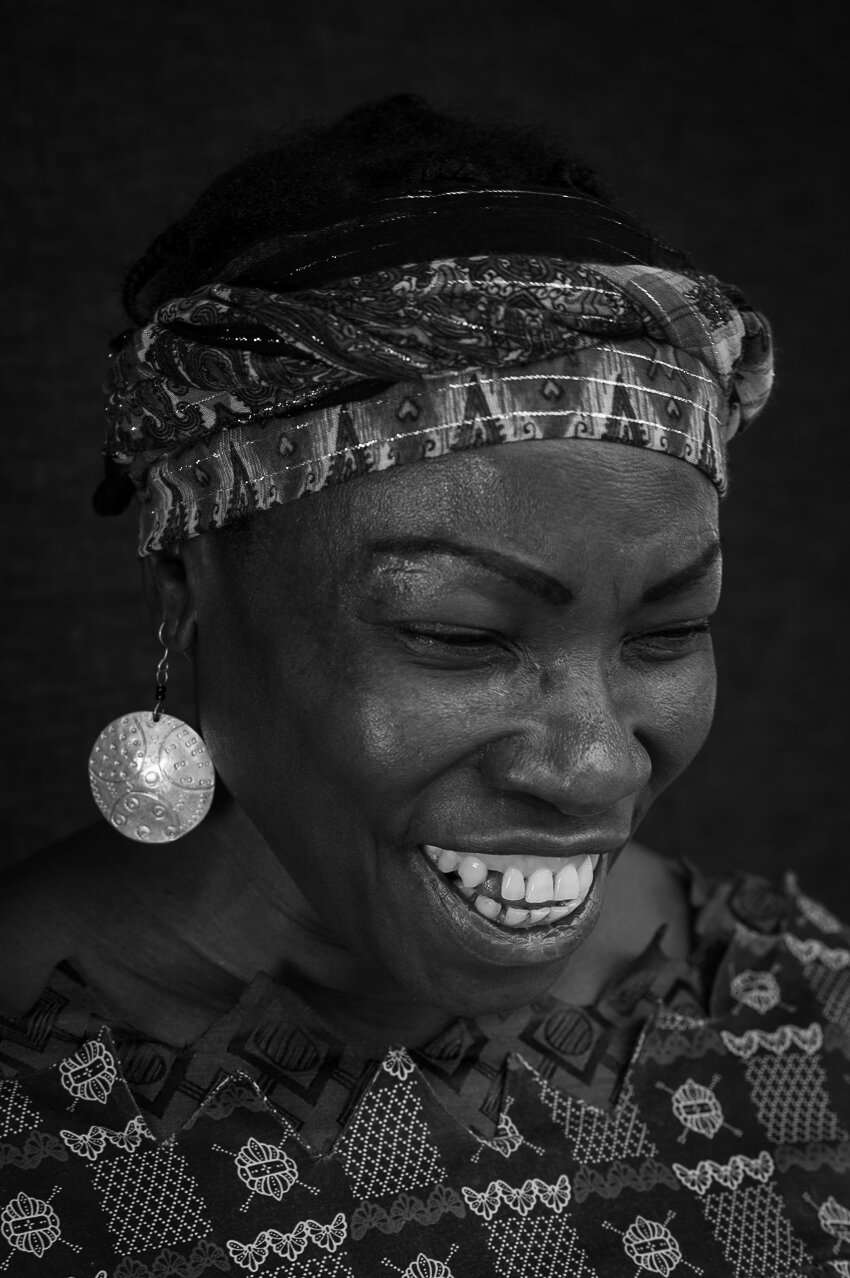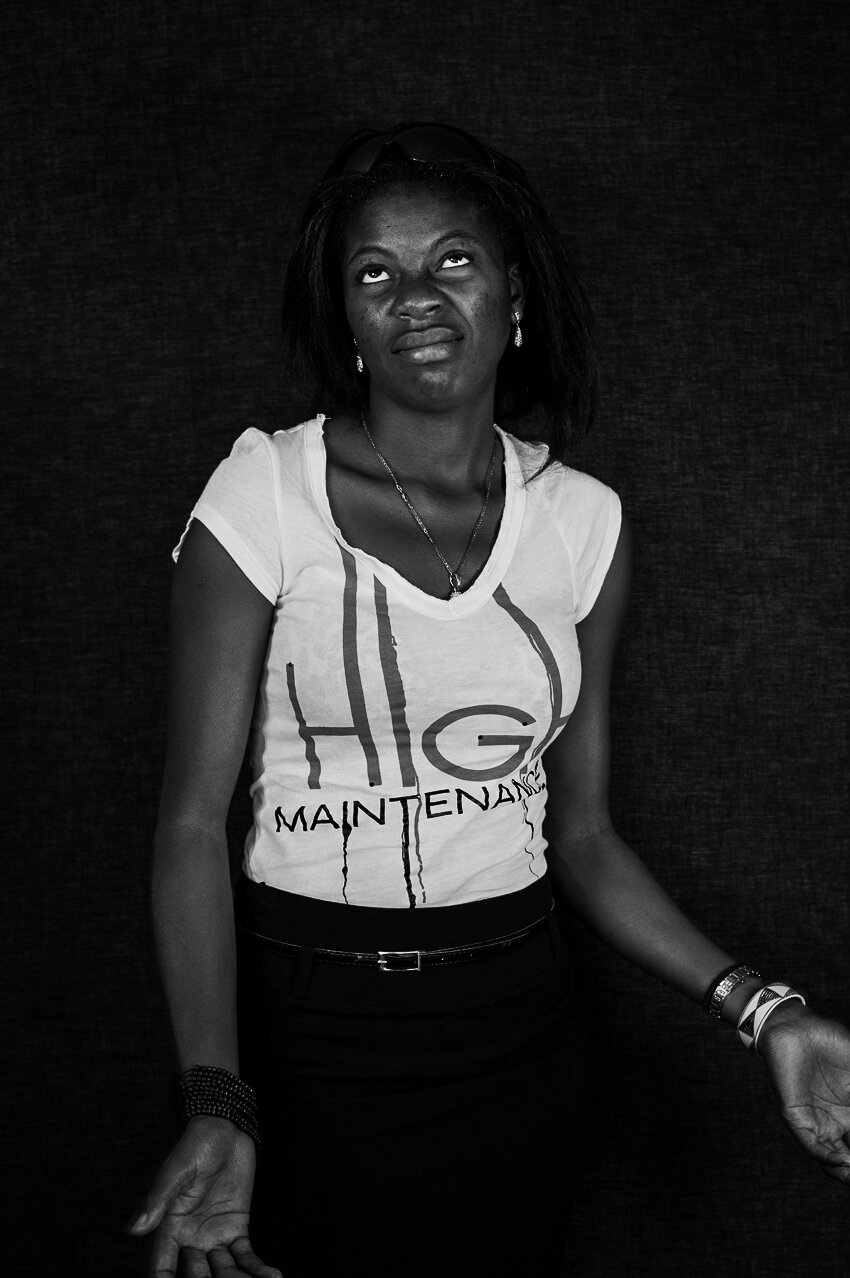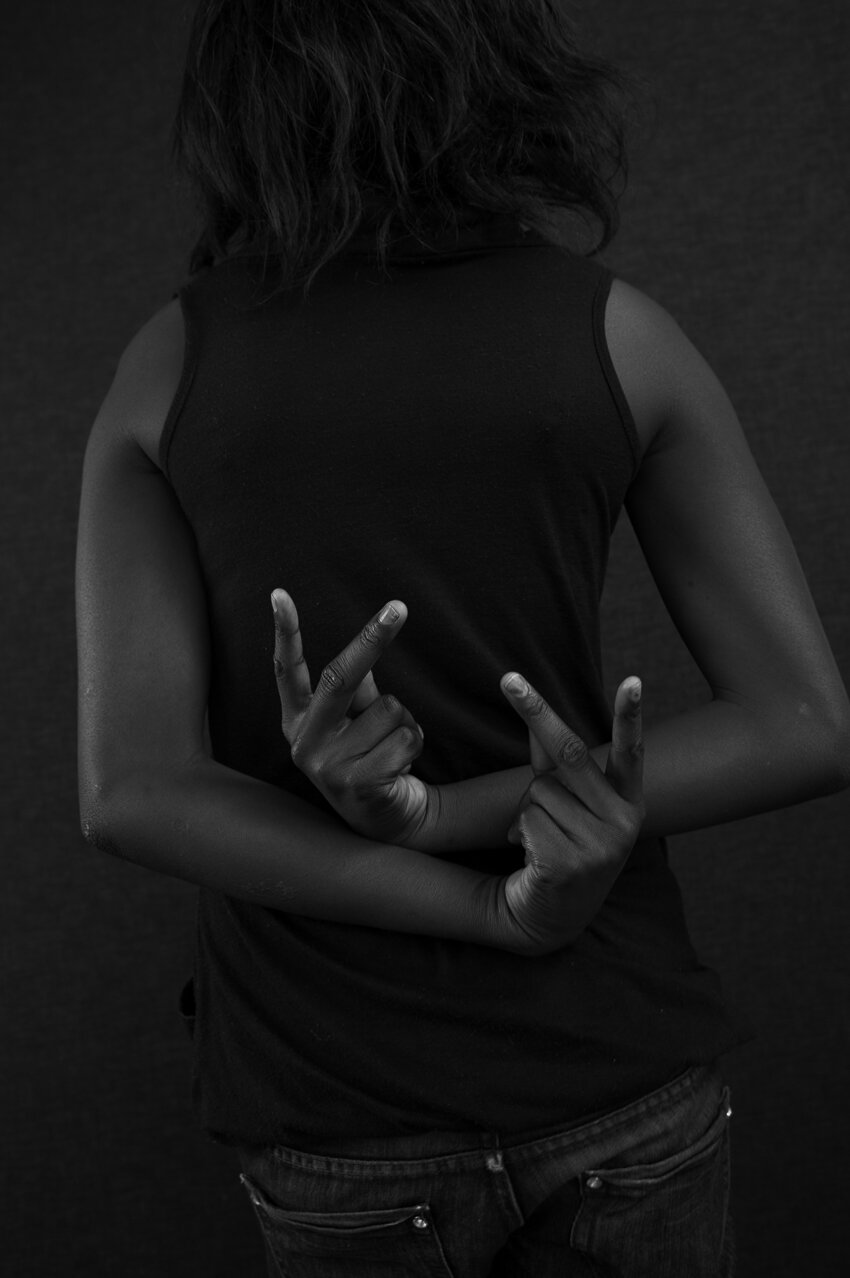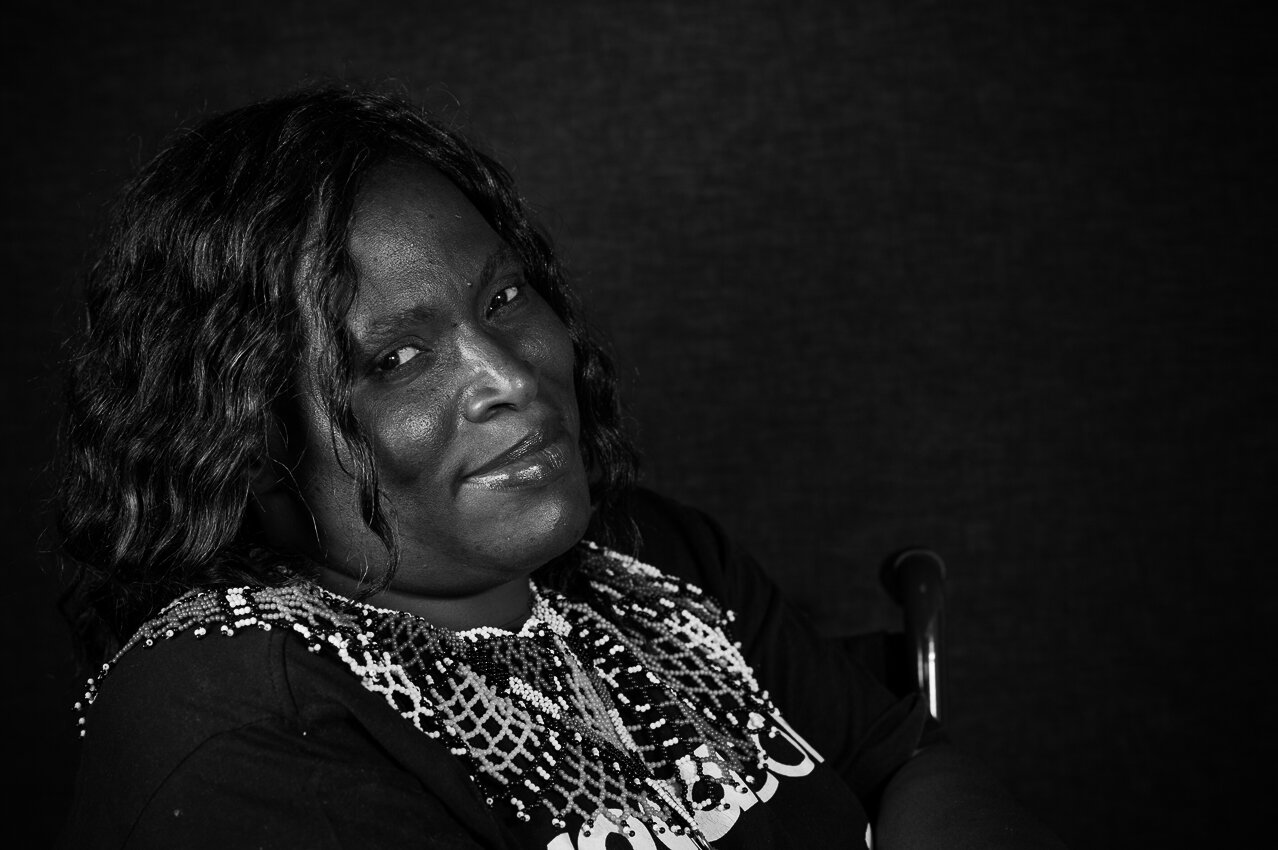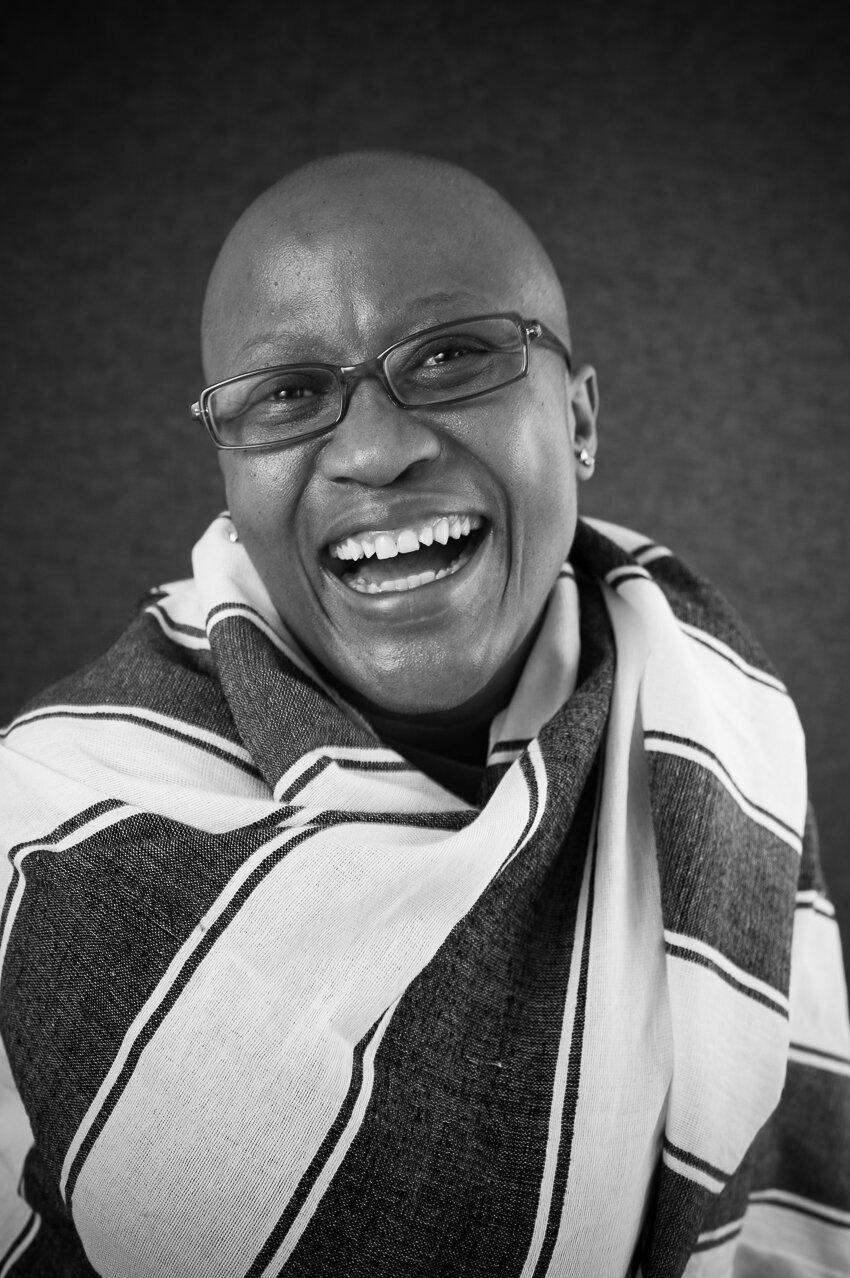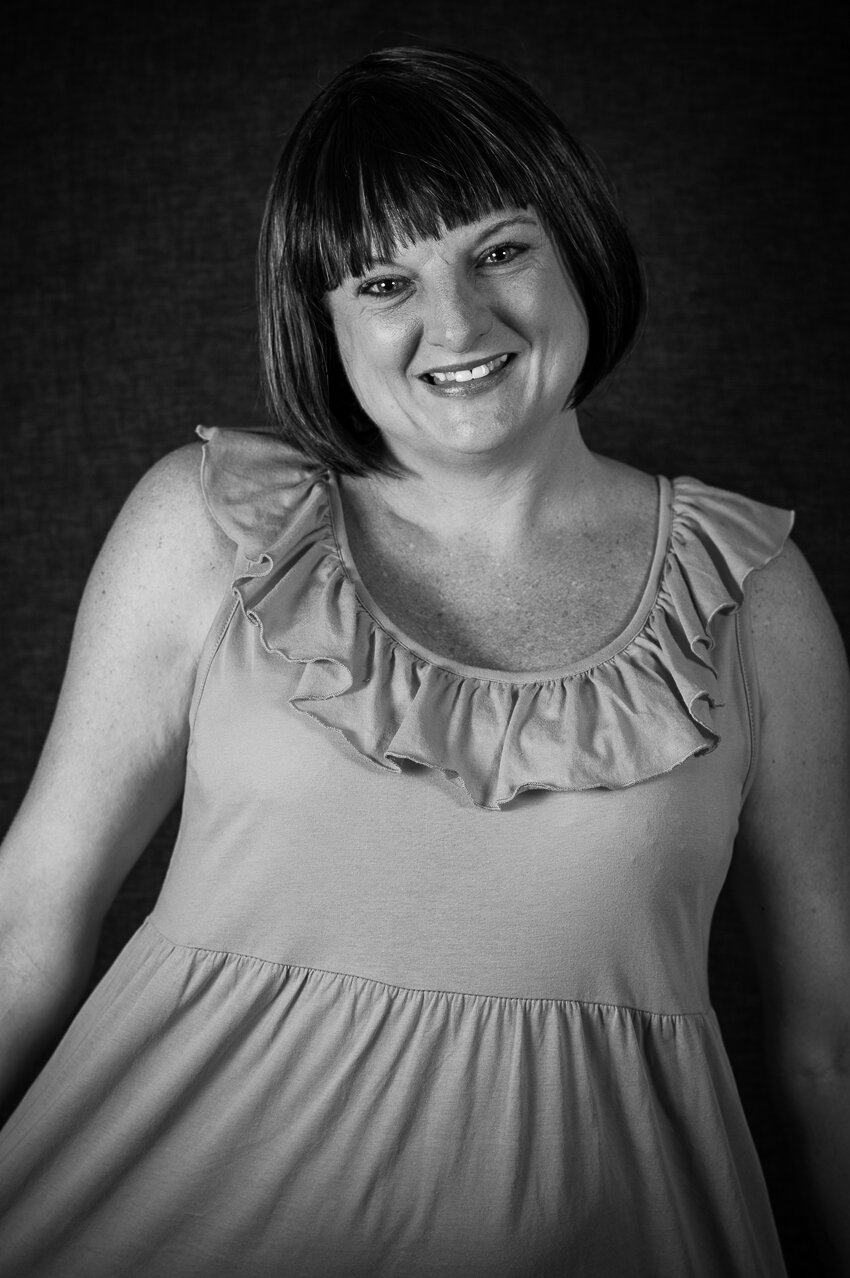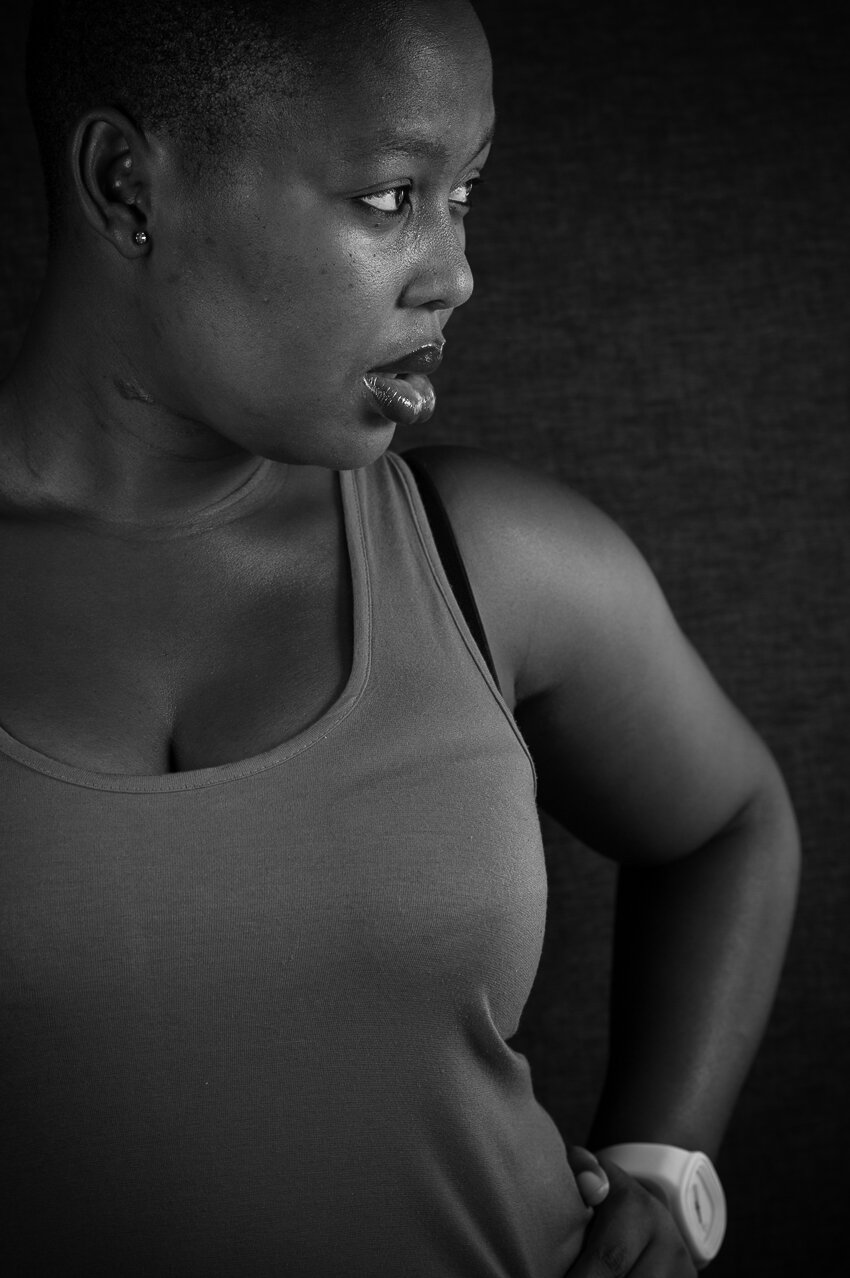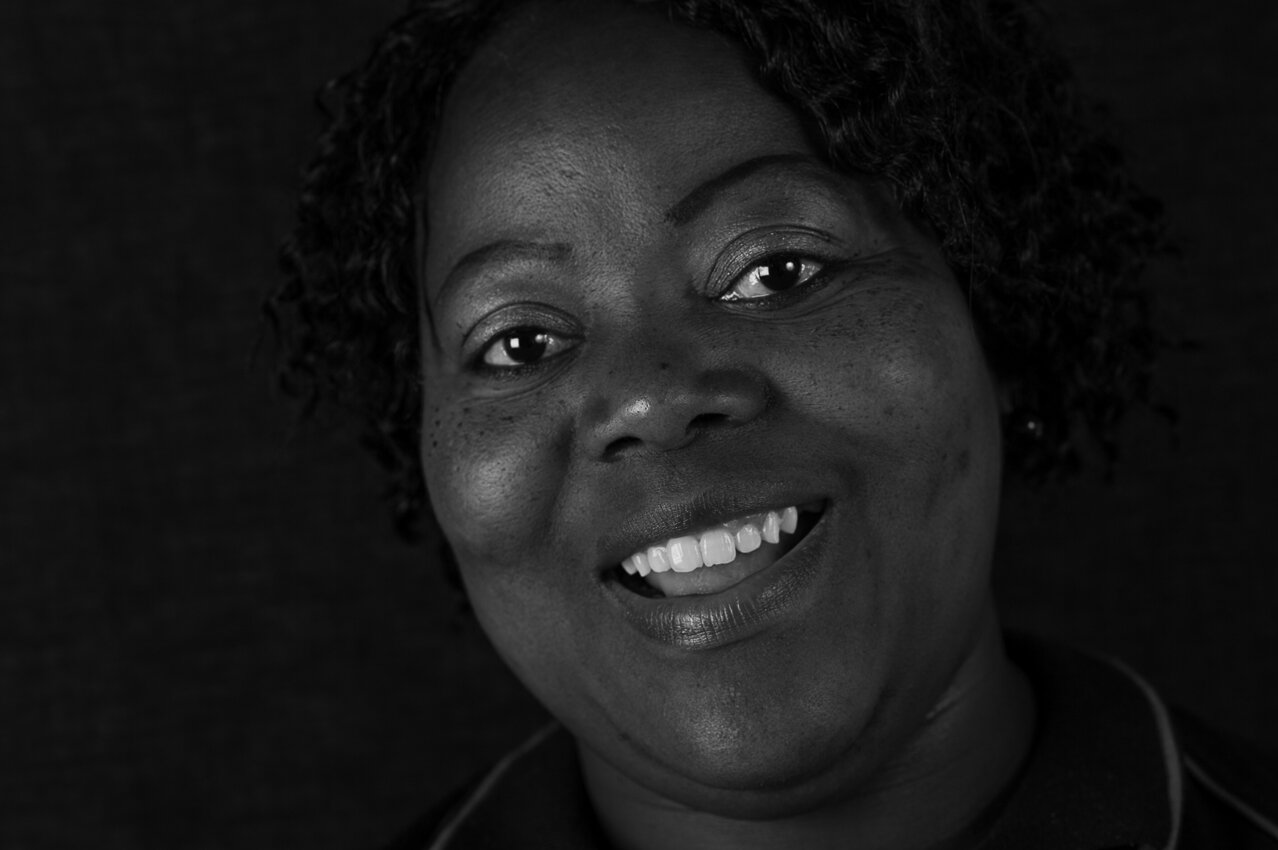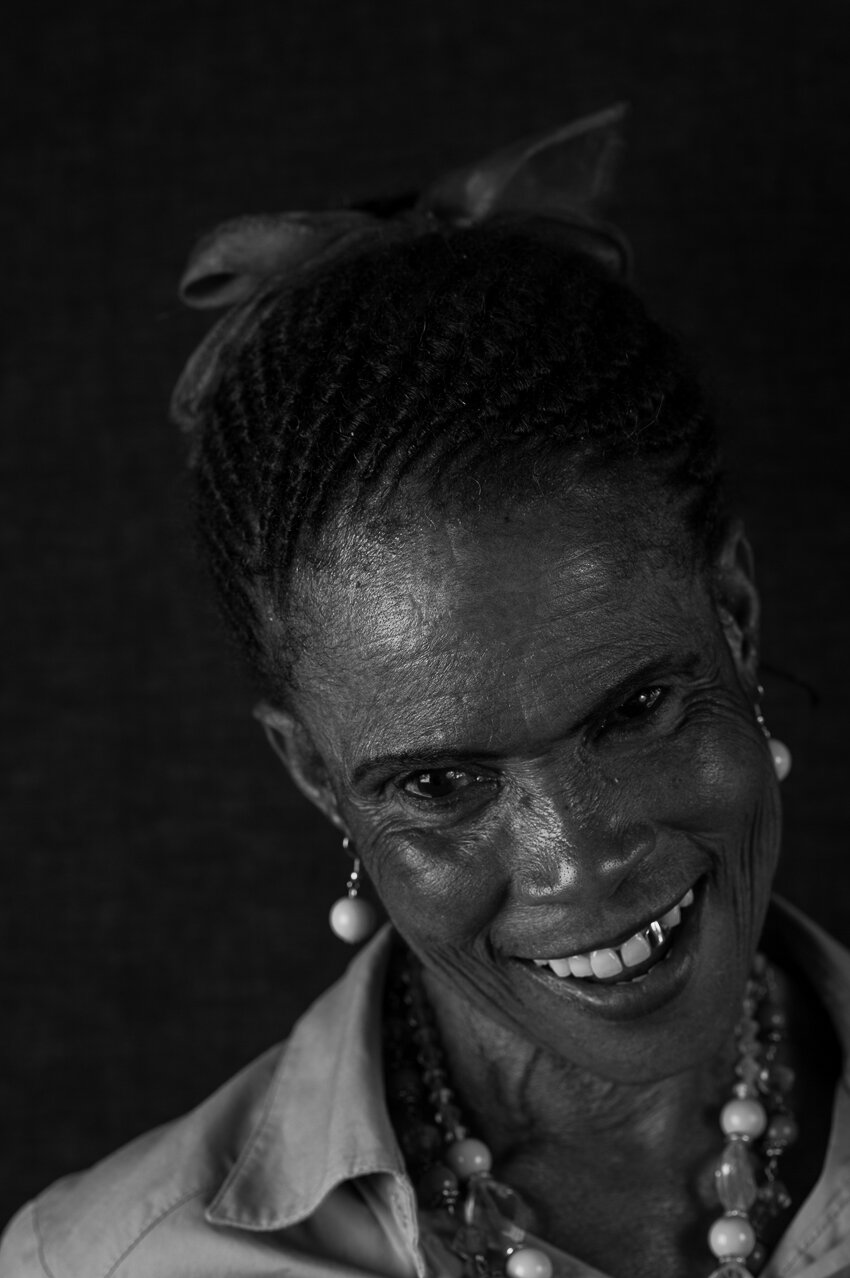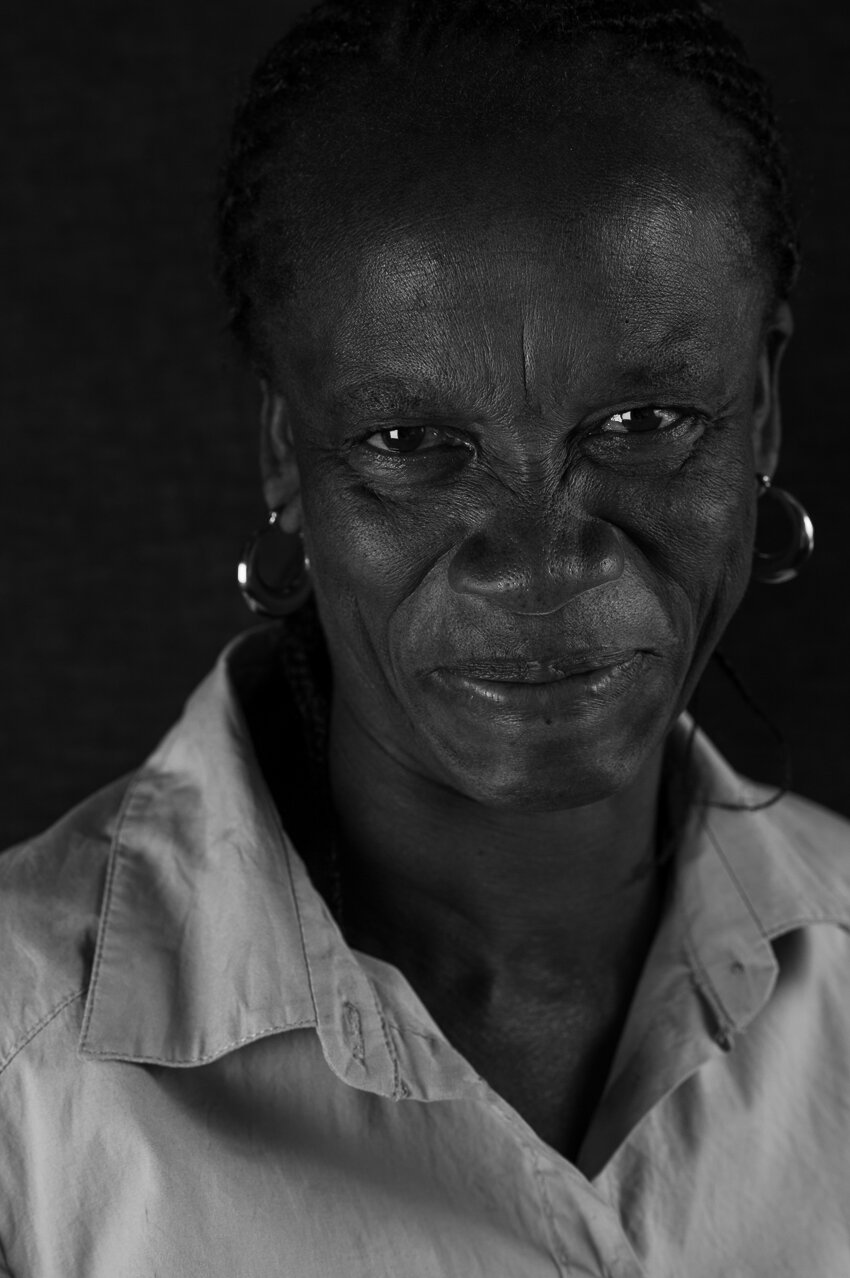NOT ME, NOT MINE
WOMEN, GIRLS & HIV
The title of the exhibition is inspired by one of the quotes given me by Anne Leon, when asked why women still get infected despite the information available and the courage of people who speak openly about their status. She answered “Never me, Never mine,” referring to the way that most everybody seems to still think that HIV won’t happen to them or those close to them; friend, lover, sister, child.
"Not Me Not Mine" is a series of photographs and interviews commissioned by the UNAIDS Regional Support Team for Eastern and South Africa in 2011. The exhibition was initially conceived as a multi-media installation at the prestigious Standard Bank Gallery in Johannesburg, South Africa, but subsequently found its iteration in a series of life-sized prints accompanied with transcripts of these interviews. Only in two cases were the interviews translated (from Afrikaans to English).
This presentation limited to print, turned out to be a blessing in disguise. The prints could easily be transported and as such found itself traveling across the African continent where more people could access the exhibition than we initially hoped for. It has since also shown at Auburn University in Alabama, USA. in 2018.
Exhibition in Windhoek, Namibia.
Leonie photographing Masi Makhalemele using her portable studio.
Exhibition preparation at the Old Fort, Constitution Hill, Johannesburg South Africa.
The Exhibition
It's an established fact that women in eastern and southern Africa are disproportionately affected by HIV for a range of socio-economic and biological reasons. In many countries, the number of young women living with HIV continues to exceed the number of their male counterparts. Evidence to support this statement abounds. We use this evidence to advocate for policy and programmes that will promote gender equality, eliminate violence against women and children and build the capacity of women to protect themselves against HIV. In the last 30 years of the epidemic we applied evidence to show that human rights and gender equity cannot be separated from prevention and treatment services and assert that the AIDS response must be rights-based. However, strategic information and scientific evidence can also mask the human element of the epidemic and lead us to forget the people behind all of the facts and figures.
This is why the "Not me, not mine: Women, girls and HIV" photography essay is so important. This essay-in the most visceral and conscious way-portrays the women who experience the reality of these facts and figures every day. Their stories are sometimes hard to read, sometimes poignant, tragic, eccentric, funny but always a source of hope and inspiration.
The stories of the sixteen women in this volume* put a face and a voice to the tribulations-and indeed, triumphs-of women living with HIV in eastern and southern Africa. We need these stories told so that we never forget why we advocate for human rights and social protection of women and girls. There is no one better than the women themselves to keep reminding us that we will continue to face high rates of HIV infection unless we take collective, urgent and concerted action to respond to the needs of women and girls in this region.
Professor Sheila Tlou
Director
UNAIDS Regional Support Team for Eastern and Southern Africa, 2013.
*Joint United Nations Programme on HIV/AIDS publication 2013




